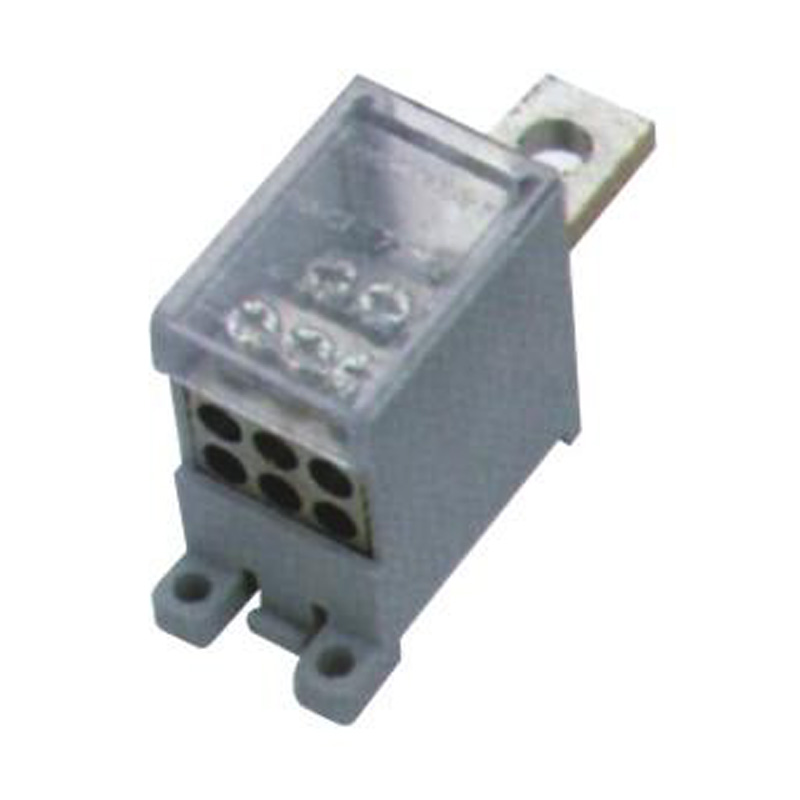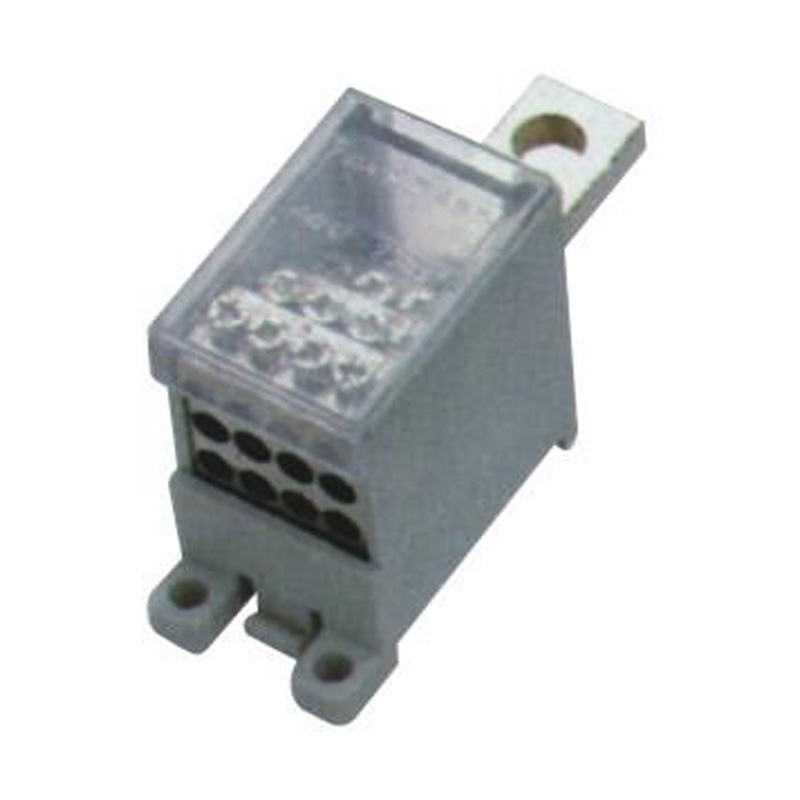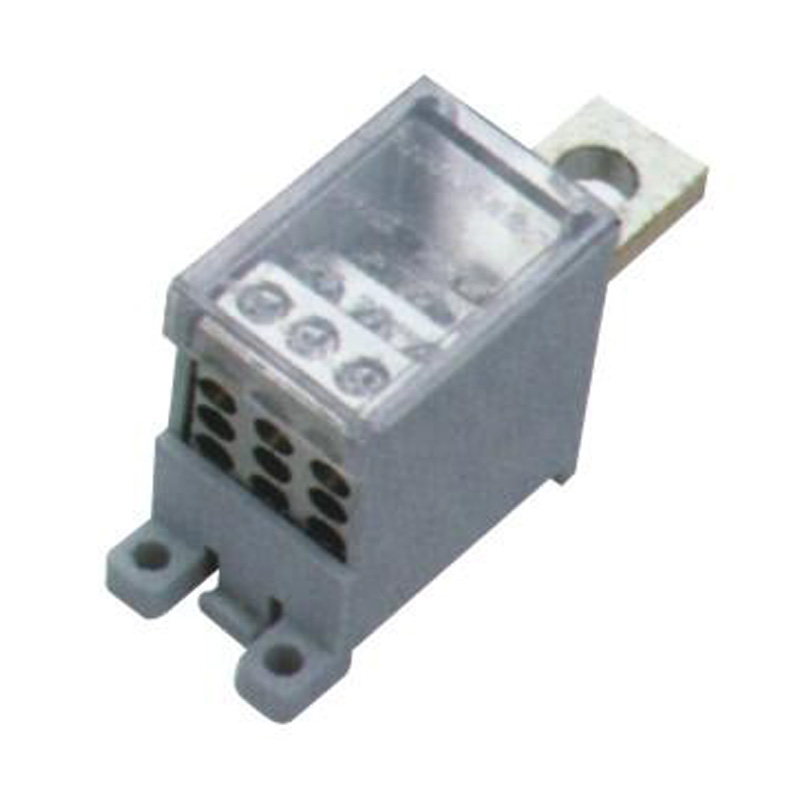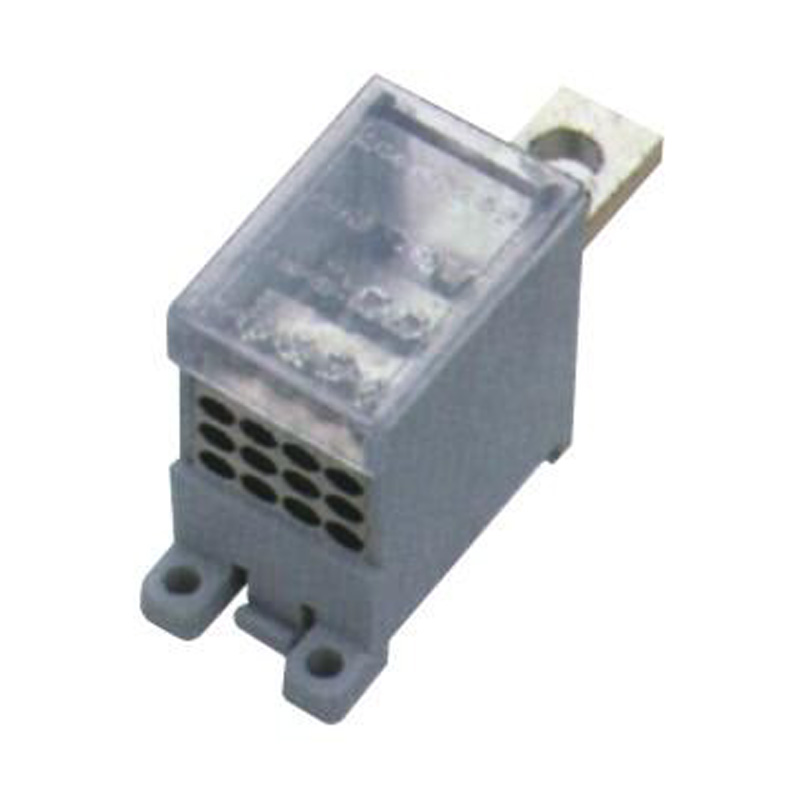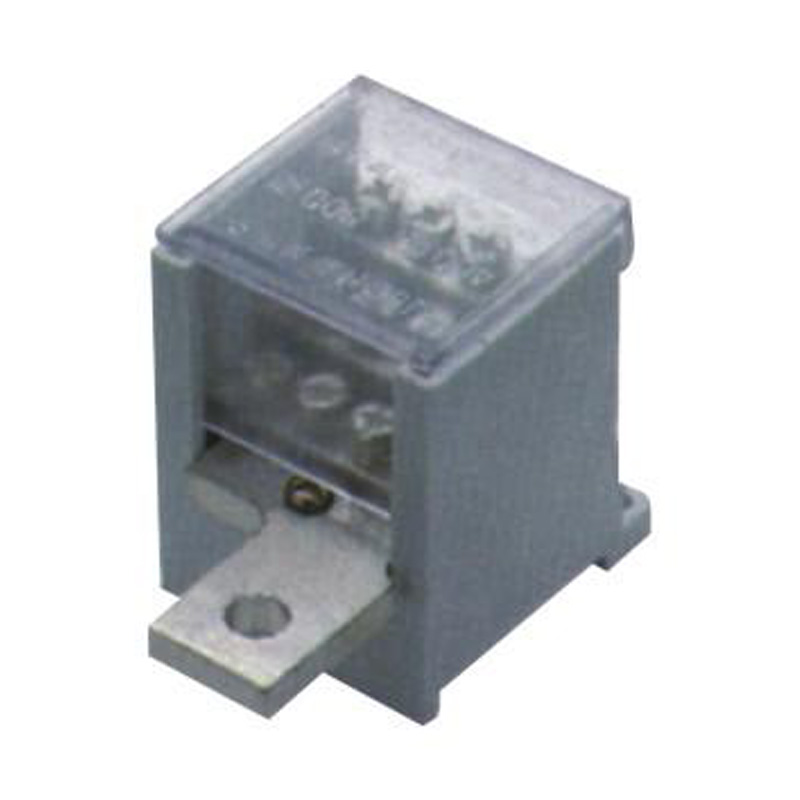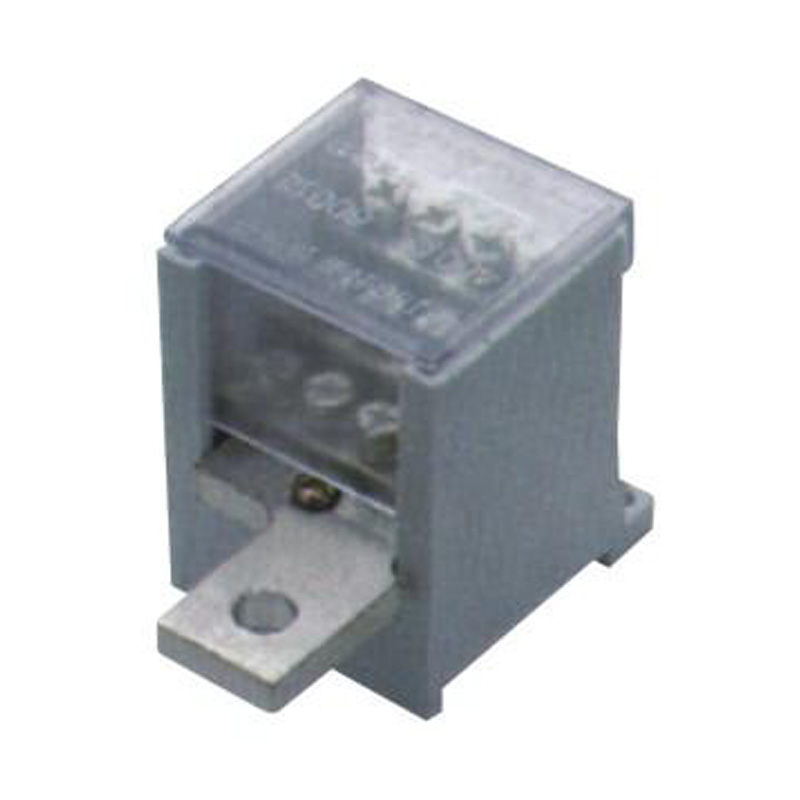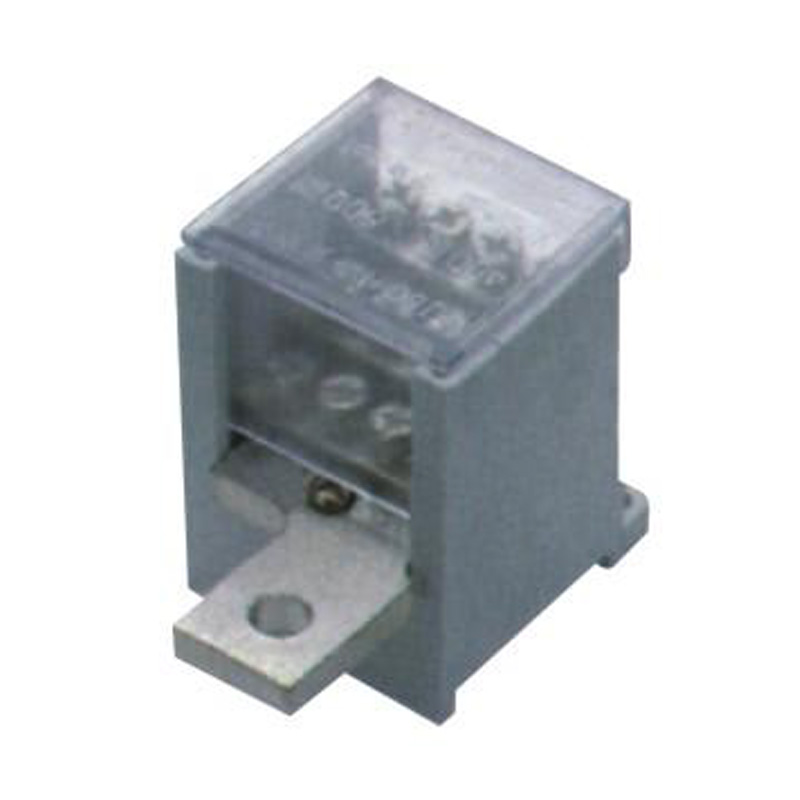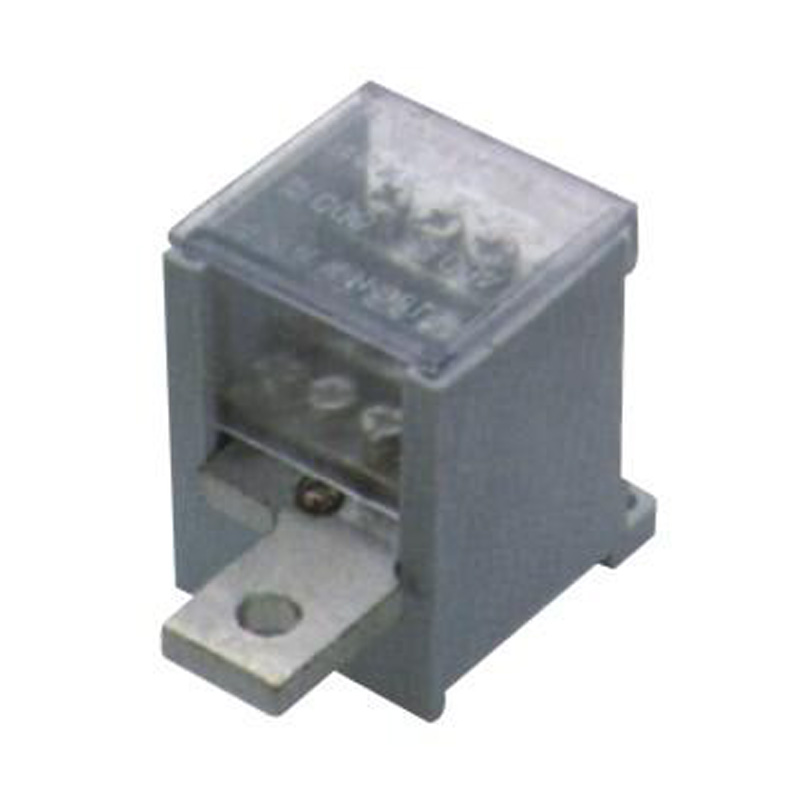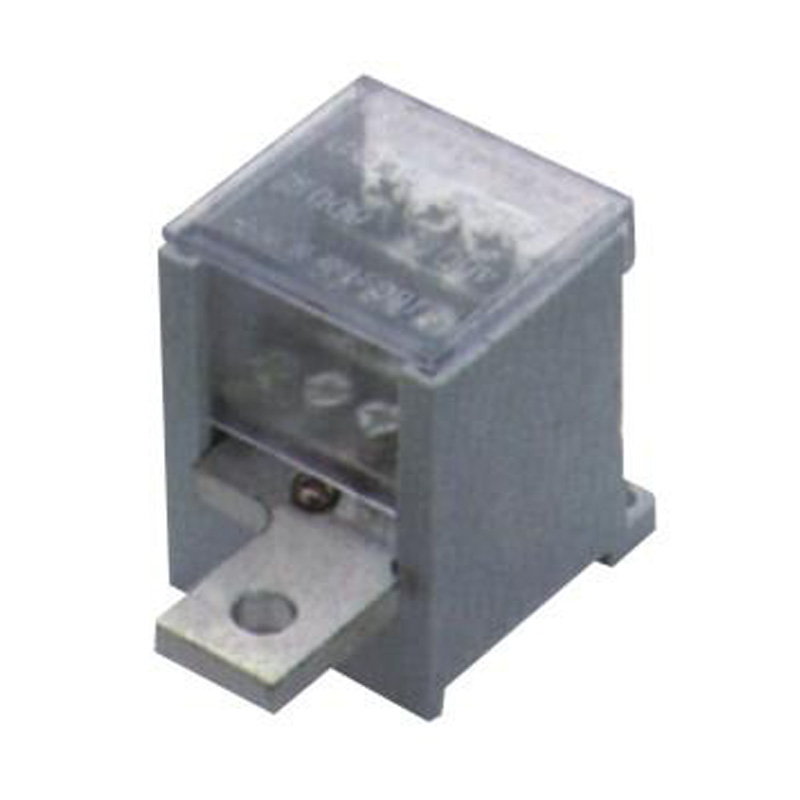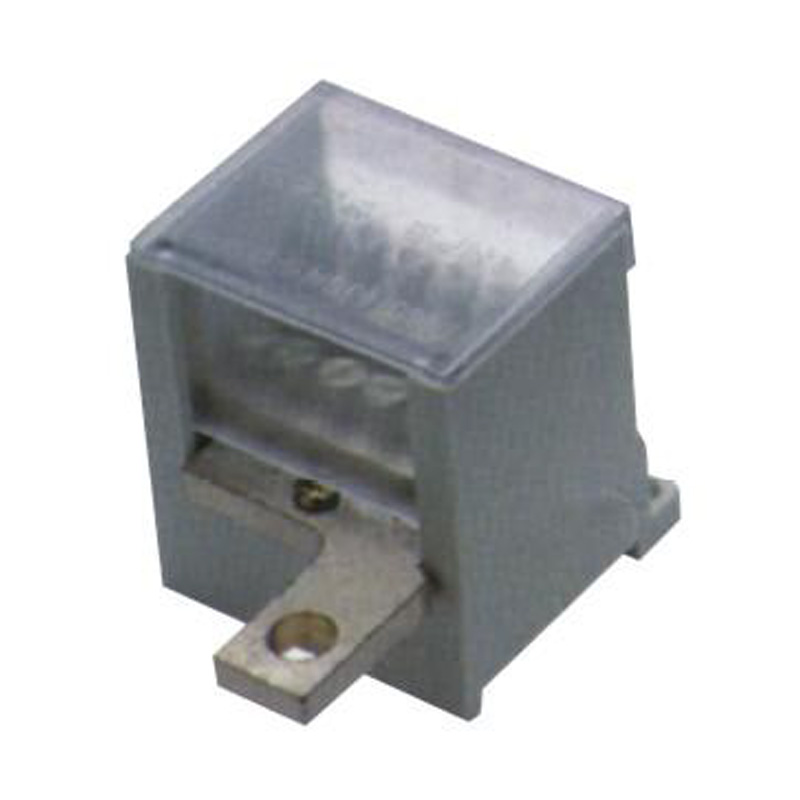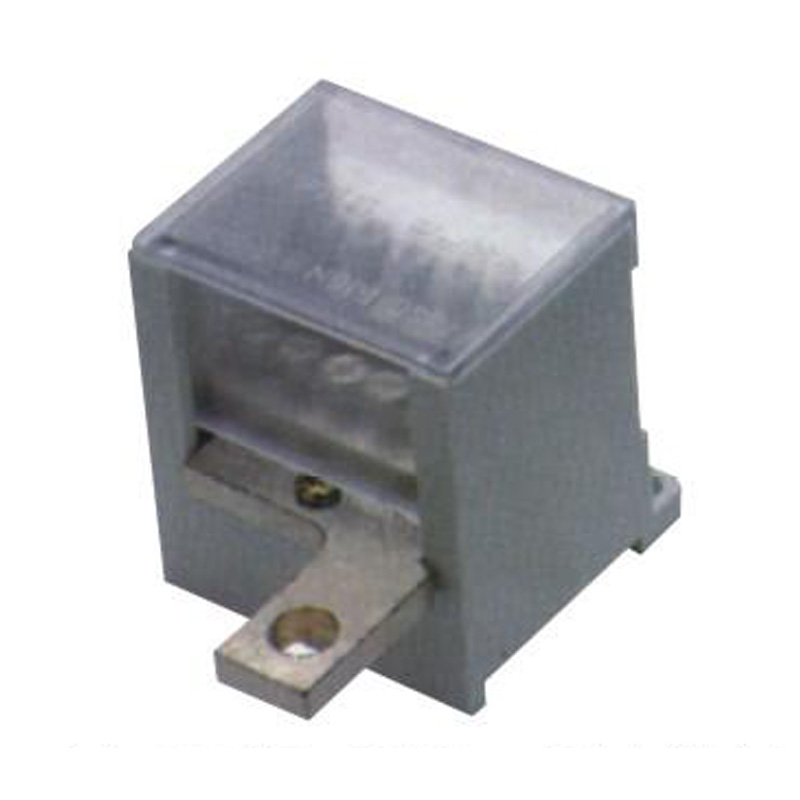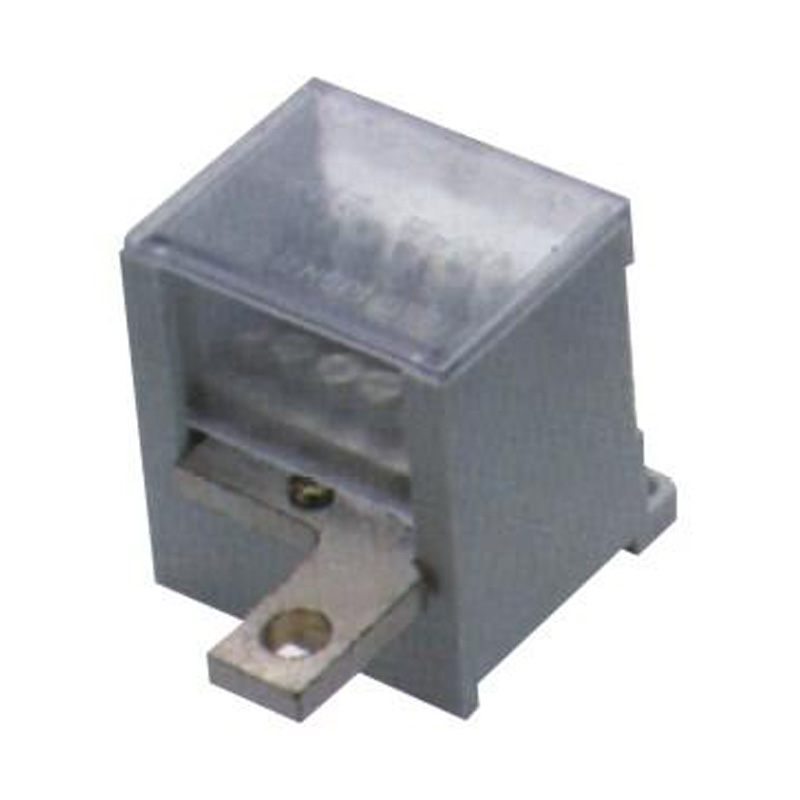In modern electrical control panels, a dual row terminal block combined with Din Rail Terminal Blocks provides an efficient soluti...
READ MOREHigh-Contact Section Terminal Block Manufacturer
High-Contact Section Terminal Blocks are professionally used for creating secure and reliable connections in electrical systems, particularly where high-current capacity and robust connections are required. These terminal blocks are specifically designed to provide a large contact area for conductors, ensuring minimal electrical resistance and maximum current-carrying capability, making them ideal for heavy-duty applications in industrial, commercial, and residential settings.
These terminal blocks feature a high-contact section design that allows for secure and stable connections across different conductor sizes, ensuring stable electrical performance regardless of the current load. The robust construction of these terminal blocks ensures durability and reliability, even under continuous electrical load and varying environmental conditions.
High-Contact Section Terminal Blocks are currently a versatile and reliable solution for managing high-current connections in electrical systems. They simplify the installation process by providing a single terminal block solution that can handle multiple conductor sizes, enhance system reliability through their robust design, and ensure consistent electrical performance. Their high-contact design makes them suitable for a wide range of applications where maintaining a stable and efficient connection is essential for safe and reliable operation.
FJ6N-250/16-50/6x16 Neutral Line Terminal Block
FJ6N-250/16-50/6x16
One-inlet, six-outlet
Inlet wire:16-50mm²,outlet wire:1.5-16mm²
Order number:150939
FJ6N-250/16-50/8x10 Neutral Line Terminal Block
FJ6N-250/16-50/8x10
One-inlet, nine-outlet
Inlet wire:16-50mm²,outlet wire:1.5-10mm²
Order number:150940
FJ6N-250/16-50/9x16 Neutral Line Terminal Block
FJ6N-250/16-50/9x16
One-inlet, nine-outlet
Inlet wire:16-50mm²,outlet wire:1.5-16mm²
Order number:150941
FJ6N-250/16-50/12x10 Neutral Line Terminal Block
FJ6N-250/16-50/12x10
One-inlet, twelve-outlet
Inlet wire:16-50mm²,outlet wire:1.5-10mm²
Ordernumber:150942
FJ6N-250/16-50/8x16 Neutral Line Terminal Block
FJ6N-250/16-50/8x16(right-hand combination)
One-inlet, eight-outlet
Inletwire:16-50mm²,outletwire:1.5-16mm²
Order number:150943
FJ6N-250/16-50/10x16 Neutral Line Terminal Block
FJ6N-250/16-50/10x16(right-hand combination)
One-inlet, ten-outlet
Inlet wire:16-50mm²,outlet wire:1.5-16mm²
Order number:150944
FJ6N-250/16-50/12x16 Neutral Line Terminal Block
FJ6N-250/16-50/12x16(right-hand combination)
One-inlet, twelve-outlet
Inlet wire:16-50mm²,outlet wire:1.5-16mm²
Order number:150945
FJ6N-250/16-50/16x10 Neutral Line Terminal Block
FJ6N-250/16-50/16 x10(right-hand combination)
One-inlet, sixteen-outlet
Inlet wire:16-50mm²,outlet wire:1.5-10mm²
Order number:150946
FJ6N-250/16-50/18x10 Neutral Line Terminal Block
FJ6N-250/16-50/18x10(right-hand combination)
One-inlet, eighteen-outlet
Inlet wire:16-50mm²,outlet wire:1.5-10mm²
Ordernumber:15094
FJ6N-250/16-50/16x16 Neutral Line Terminal Block
FJ6N-250/16-50/16x16(right-hand combination)
One-inlet, twelve-outlet
Inlet wire:16-50mm²,outlet wire:1.5-16mm²
Order number:150948
FJ6N-250/16-50/18x16 Neutral Line Terminal Block
FJ6N-250/16-50/18x16(right-hand combination)
One-inlet, eighteen-outlet
Inlet wire:16-50mm²,outlet wire:1.5-16mm²
Ordernumber:150949
FJ6N-250/16-50/24x6 Neutral Line Terminal Block
FJ6N-250/16-50/24x6(right-hand combination)
One-inlet, twenety-four-outlet
Inlet wire:16-50mm²,outlet wire:1.5-6mm²
Ordernumber:150950
Search
Categories
-
Energy Measuring Terminal Block(314)
- Energy Measuring Joint Terminal Block(16)
- Polycarbonate Energy Measuring Terminal Block(24)
- Standard Wiring Energy Measuring Terminal Block(4)
- Transparent Shell Energy Measuring Terminal Block(6)
- Multifunctional Test Energy Measuring Terminal Block(10)
- Intelligent Safety Energy Measuring Terminal Block(6)
- Single-Phase Multi-Circuit Output Terminal Block(12)
- Self-Elevating Metering Box Terminal Block(7)
- One Household One-Meter Meter Box Dedicated Terminal Block(56)
- Three-Phase Metering Box Dedicated Terminal Block(24)
- Repeatable Grounding Line Terminal Block(20)
- Terminal Block for One-Inlet Multi-Outlet Metering Box(15)
- Closed Terminal Block(11)
- Heavy Current Terminal Block(48)
- Self-Boosting Terminal Block(5)
- Intelligent Self-Locking Terminal Block(3)
- Tool-Free Crimping Type Terminal Block(5)
- Wide Range of Wire Diameters Terminal Block(5)
- Combined Type Energy Measuring Terminal Block(37)
-
Switch Terminal Block(55)
- Pin-Type Incoming Line Switch Terminal Block(4)
- Multi-Way Connection Switch Terminal Block(4)
- Plug-pin Switch Terminal Block(7)
- Combined Type Switch Terminal Block(7)
- High Contact Cross Section Switch Terminal Block(7)
- Wide Range Switch Terminal Block(11)
- One Way in Switch Terminal Block(12)
- Equipped with Circuit Breaker Switch Terminal(3)
-
Heavy-current Terminal Block(631)
- Modular Building Block Terminal Block(156)
- Spherical Non-Destructive Crimp Terminal(120)
- Dual-Mode Connection Electrical Terminal(90)
- Anti-Electricity-Theft Terminal Block(74)
- Convenient Connection Terminal Block(12)
- High-Contact Section Terminal Block(12)
- Wide Range of Wire Diameters Neutral Line Terminal(9)
- Heavy-Current Neutral Line Terminal(9)
- Upper and Lower Rows of Neutral Terminal(2)
- Independent Neutral Line Terminal(7)
- Nose-Type Neutral Line Terminal(7)
- Rail Type Neutral Line Terminal(9)
- Fixed Neutral Line Terminal(12)
- Double Rail Assembly Electrical Terminal(19)
- Blue Jack-Up Terminal(6)
- Black Base Copper Bar Terminal(5)
- Compact Terminal Block(16)
- Precision Terminal Block(23)
- U-Shaped Harpoon Terminal(2)
- Grounding Metering Box Terminal Block(12)
- High-Performance Terminal Block(19)
- Multifunctional Terminal Block(10)
- Din Rail Terminal Block(76)
- Watt-hour Meter Connector(49)
-
Energy Meter Accessories(116)
-
-
As electrical systems become more advanced, the demand for more reliable, durable, and efficient components grows. Connectors Term...
READ MORE -
Ensuring that connector terminals are properly installed is critical for the long-term performance and reliability of any electric...
READ MORE -
Selecting the correct terminal is essential for the stability and efficiency of any electrical system. For professionals in the el...
READ MORE -
Electrical systems rely on high-quality components for safe, efficient, and reliable operation. One such crucial element is the co...
READ MORE -
Using the right junction box and circuit breaker block junction box can bring more than safety — it can significantly improve inst...
READ MORE
What Are The Production Steps For The High-Contact Section Terminal Block?
The manufacturing of a high-contact section terminal block, designed for electrical connectivity and mechanical strength, is a multi-stage process that prioritizes precision and quality control.
- 1. Material Selection and Preparation: The process begins with choosing the right materials. The conductive parts, typically the contact plates and screws, are stamped from high-conductivity copper alloy. This raw material is often supplied in large rolls or sheets. This copper alloy is then frequently plated with a layer of tin or silver. This plating enhances corrosion resistance, improves solderability, and ensures a stable, low-resistance contact surface. The housing is molded from a high-grade engineering plastic, such as polyamide (nylon) or polycarbonate, chosen for its durability, high dielectric strength, and resistance to heat and chemicals.
- 2. Stamping and Forming the Metal Components: Using precision progressive die stamps, the plated copper alloy sheet is punched and formed into the specific shapes required for the current bar and the clamping plates. This automated stamping process creates the intricate features of the contact section in a single, efficient operation. The stamped parts are then often put through a secondary process to achieve their final three-dimensional form, such as bending the clamping plate to create its spring tension. This ensures the part is ready to provide consistent clamping force.
- 3. Injection Molding the Housing: The plastic housing is created through injection molding. Granules of the raw plastic material are heated until molten and then injected under high pressure into a custom-designed mold. This mold defines the block's external shape, internal chambers for the metal components, and the wire entry points. Precise control of temperature and pressure is critical here to prevent defects and ensure the housing has the necessary mechanical strength and insulating properties.
- 4. Automated Assembly and Final Testing: In the final assembly stage, the stamped metal components are automatically inserted into the newly molded plastic housings. Robotic systems often handle this to ensure speed and accuracy. Once assembled, the terminal blocks undergo rigorous testing. This includes automated checks for dielectric strength (hi-pot testing), where a high voltage is applied to ensure the insulation is effective, and gauging to verify that the clamping force and screw torque meet specified standards. This final quality control step is essential to guarantee performance and safety before packaging.
What Changes Have The Neutral Connector Terminal Block Undergone?
The neutral connector terminal block, a key component in electrical distribution, has undergone significant evolution to meet increasing demands for safety, space efficiency, and installation speed.
1. Enhanced Safety and Functionality: Early neutral blocks were simple, unmarked brass or copper bars. The critical change has been the integration of advanced safety features. A major development was the creation of the dual-level terminal. This design features two separate connection points under a single screw, allowing the neutral and protective earth (PE) conductors to be connected in one location while maintaining electrical isolation between the two circuits. This prevents incorrect wiring and improves overall system safety. Furthermore, modern blocks now include standardized, clear markings for "N" (neutral) identification, reducing the risk of installation errors.
2. Design for Efficiency and Density: The push for more compact control panels and switchboards has driven a redesign of the neutral block's form factor. Traditional blocks were large and bulky. Modern versions are designed for high density, allowing many circuits to be connected in a minimal amount of space on a DIN rail. This is achieved through slimmer profiles and more efficient internal layouts. Alongside this, the connection method itself has been improved. While the classic screw clamp remains reliable, many manufacturers now also offer versions with spring-clamp or push-in technology. These allow for much faster wire insertion without tools, significantly reducing installation time and labor costs while maintaining a secure, vibration-resistant connection.



 English
English Español
Español عربى
عربى